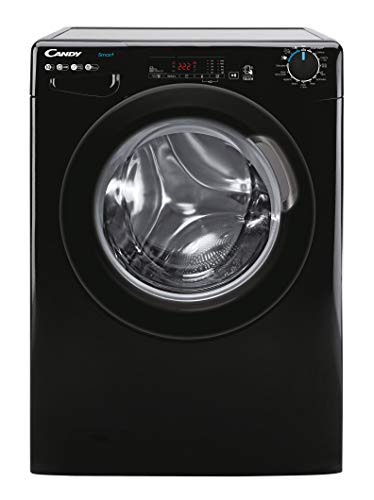Why Buy a 10kg Front Loader?
The front-loader 10kg is ideal for large loads of laundry with 13 wash programs that include handwash, and plenty of space for big wash cycles. With smart tech and advanced features, it's a perfect partner for your laundry at home.
Front loaders generally take longer to wash, and aren't available in larger capacities, and often be prone to mould and mildew. They are more water and energy efficient than top-loaders.

Energy
The main energy expense in a front loader of 10kg is electricity to heat water to operating temperature and to run the motor. These costs can be offset with lower energy consumption during operation compared with top-loaders, notably less power in the agitation cycle and during spin, and less water. Some machines offer low-water cycles that consume less water than the cotton cycle. This saves both water and energy.
In general, true front-load washers consume less detergent than top-loaders and the tumbling action inside the drum is able to entrain air which reduces foamy suds and overflows, but not slowing the cleaning process. washer 10kg seals as well as the bellows of top-loaders can be more prone to wear. In addition, the top-loader's agitator's mechanical mechanism can cause considerable wear and abrasion to clothes, since it presses clothes against one with paddles that constantly drop and drag them through the wash. This abrasion is measured by the amount fabric that builds up on the lint screen, as lint is primarily composed of stray fibers that are removed from clothing while washing and drying. A lot of top-loaders are designed to operate at slower speeds and can also have an "freshening cycle" to clean the mechanical gears or bellows regularly.
Water
Top-load washers require an agitator or impeller to force detergent and water through clothing, which causes mechanical wear and abrasion. By contrast, front-loaders use paddles that gently lift and drop clothes inside a drum spinning for cleaning, reducing such wear. The amount of wear can be approximated by the amount of lint that is collected in dryer lint filtering systems, which consists of stray threads detached from clothes when drying and washing.
Because front-loaders use a lower level of water than top-loaders, they are less prone to leakage. Front-loaders need a bellows or seal to prevent water from entering through the door. These systems aren't maintained as frequently as top-loaders.
Furthermore, front-loaders can work with cold water or hot and a majority of them without the need for a heating source, which makes them more energy efficient than top-load machines. This efficiency could reduce operating costs for the same laundry load in places where energy, water and detergent are expensive.
